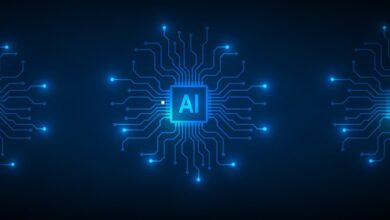Enterprises need to make better choices to reduce GenAI emissions

The mounting environmental impacts of generative artificial intelligence (GenAI) systems can be significantly reduced if businesses “choose the right model” for their use cases and implement sustainable practices throughout its lifecycle, according to Capgemini Research Institute.
Capgemini’s Developing sustainable GenAI report noted that, for the latest generative pre-training transformer (GPT) models, the training alone is roughly equivalent to the yearly energy consumption of 5,000 US homes, with “an equal or greater amount of energy” being needed to then run the model operationally in a business context.
This meant one query to a large language model (LLM) required 10 times as much electricity than a Google search.
It added that, in the span of a year, the number of organisations which have integrated GenAI into their products and services has gone up from 6% to 24%. Moreover, it estimated that by 2026, GenAI would account for 4.8% of an organisation’s total greenhouse gas emissions, up from the current rate of 2.6%.
Capgemini also said that using a LLM to run an inference of 20 to 50 queries uses about 500ml of water each time, and that GenAI could create between 1.2 to five million metric tons of e-waste by 2030; around 1,000 times more e-waste than was produced in 2023.
“The surge in energy consumption driven by generative AI is leading to a significant increase in emissions, which are expected to nearly double as a share of organisational carbon footprints within two years,” said Vincent Charpiot, head of Capgemini’s Group Sustainability Business Accelerator. “It is urgent for businesses to embed sustainability into their AI strategies.
“By leveraging smaller models, renewable energy, and transparent practices from AI and GenAI vendors, we can mitigate environmental impacts while harnessing AI to drive both innovation and sustainability.”
Environmental impact
From the production of graphics processing units – which requires mining rare earth metals – to training the models to run enormous datacentres, all of these steps contribute significantly to the technology’s environmental impact.
For most organisations, the use of GenAI products and services fall under their Scope 3 emissions – referring to indirect greenhouse gas emissions that occur outside of a company’s operations, but that are still a result of their activities.
However, Capgemini said making the right choices at various stages of a model’s lifecycle – including choosing hardware, model architecture, power source for datacentres and its ultimate use case – can significantly bring down the environmental impact.
It added that companies should consider whether they even need energy-intensive GenAI technologies in cases where they could use more resource-efficient models for a similar result.
“Everybody wants to do something with generative AI, but a lot of times you don’t even need it,” said Vishal Singhvi, director of generative AI at Microsoft. “You can do this very well with your traditional AI, which consumes significantly less compute power and workloads.”
Small language models
Organisations should therefore take into account whether tasks can be completed using small language models (SLMs) instead, which are trained with smaller and more specific datasets compared with a LLM.
Capgemini said this can not only significantly reduce emissions, but also cost. According to Arthur Mensch, CEO of Mistral AI: “Smaller models mean the applications are less costly to run and, more importantly, if you have a model that is 100 times smaller, you can call it 100 times more for the same cost, bringing a little more intelligence to your application with each call.”
For Mauli Tikkiwal, a board member at UK-based Orchard Hill College and Academy Trust, it’s vital that organisations are aware of how their use of GenAI is contributing to negative environmental impacts. “First, you must identify the impact so you can track and reduce it,” she said.
However, while monitoring and tracking emissions is paramount, only 14% of those surveyed by Capgemini said their companies measure and track their GenAI footprint.
Three-quarters of the executives cited “limited transparency” from suppliers as a challenge in measuring environmental impact. “They expect the tech sector to lead efforts” in facilitating that goal, the report said.
Despite these trends, Capgemini highlighted how some tech firms are approaching the technology sustainably.
It noted, for example, that Nvidia’s latest GPUs are 30 times more efficient than their previous iterations; that MIT spin-off startup LiquidAI has developed “adaptive and less energy-hungry” algorithm techniques; and that Microsoft has introduced energy-monitoring features in its LLMs.
It further highlighted a deal signed by Meta to purchase geothermal energy to provide power to its US datacentres, as well as Google Carbon Sense Suite, which is “a collection of features that makes it easy to accurately report your carbon emissions, and reduce them”.
During the AI Summit London in June 2024, sustainability experts said that although the technology can be deployed in a number of ways to help companies become more environmentally sustainable, there must be a recognition of the clearly negative impacts it is currently having on the planet.
They said that while it could help companies better manage their Scope 3 emissions by linking up data sources and making them more legible, these emissions can be difficult to track given how differently organisations collect, manage and share their data.




